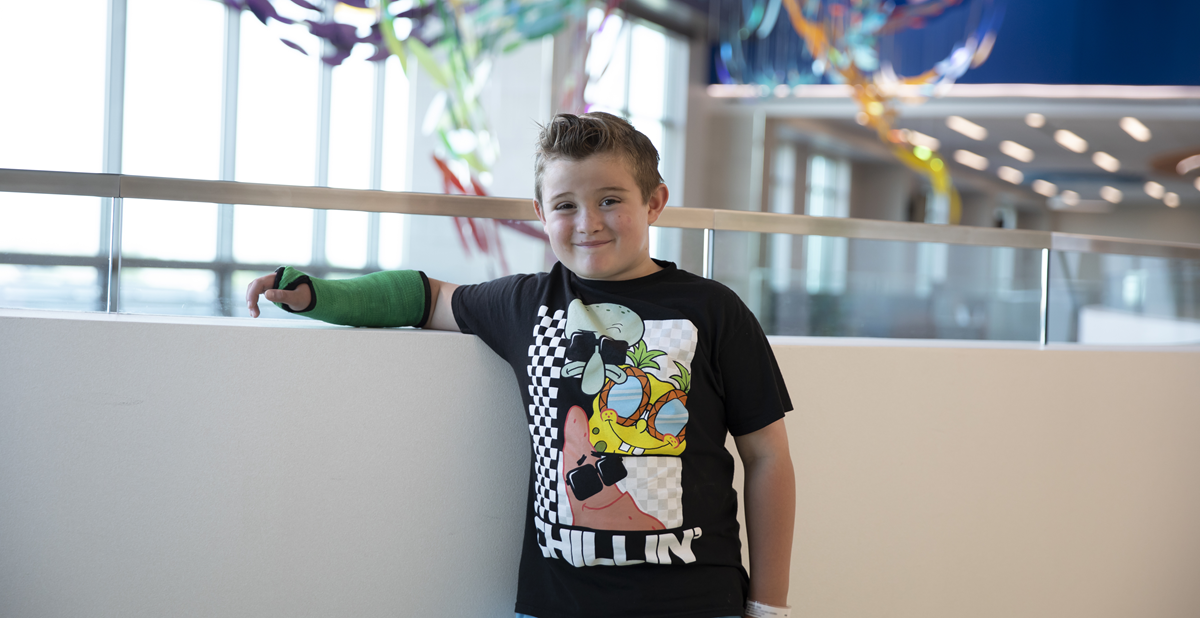Casts are made of two layers — a soft inner layer and a hard outer layer. The inner layer of a waterproof cast uses a special type of lining that allows it to get wet when bathing, showering or swimming.
Does a waterproof cast have any risks?
Every time a waterproof cast gets wet, it needs to completely dry. If the skin inside the cast stays wet for a long period of time, it can become irritated. If your child develops a rash or burning sensation while in the cast, notify your clinic immediately.
Waterproof cast care
- A waterproof cast needs to get wet daily.
- After your cast gets wet, make sure all of the water exits the cast by moving your arm/leg around.
- Your natural body heat will evaporate the rest of the water in the cast.
- You may also use a hair dryer, on the cool setting, to finish the drying process in areas like the elbow crease or heel of the foot.
- Following bathing and swimming, flush the inside and outside of the cast with a forceful stream of clean water only.
- If the cast gets itchy, dirty or smelly, you may rinse mild soap through the cast and then thoroughly flush it with clean water.

- Follow directions and activity restrictions given by your provider.
- See cast care patient education for more information.
- You may swim in lakes and oceans with the waterproof cast, but it can be difficult to remove sand, dirt and other small particles from inside the cast. If particles are left in the cast, they can cause skin irritation and discomfort. Please be sure to flush the cast thoroughly with clean water until all particles are removed before allowing the cast to dry.
Learn more about our Fracture Clinic.














